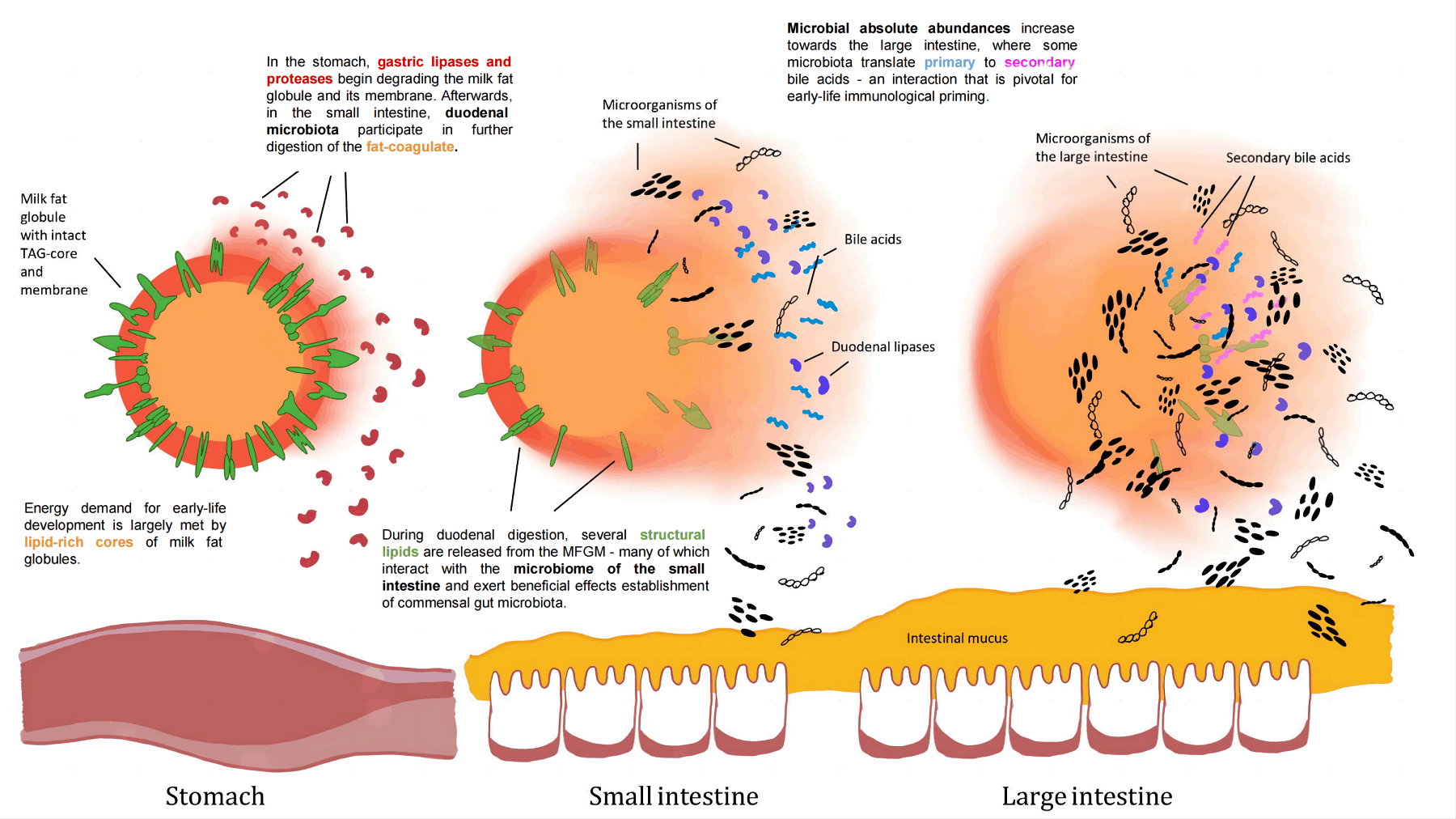Human breast milk (HBM) is the main source of nutrition for neonates across the critical early-life developmental period. The highest demand for energy is due to rapid neurophysiological expansion post-delivery, which is largely met by human milk lipids (HMLs). These HMLs also play a prebiotic role and potentially promote the growth of certain commensal bacteria, which, via HML digestion, supports the additional transfer of energy to the infant. HBM is pivotal for nutrition, immunological priming, neurodevelopmental support, and gut microbiome establishment in newborn infants. The authors in this study, discuss the compositional considerations and impact of HMLs on the early life gut microbiota. Milk fat globule membrane, contains a selective repertoire of molecules like triacylglycerols, to strengthen colonization success for human commensal bacteria and colonization resistance against opportunistic pathogens, while simultaneously delivering a major fraction of energy supply through the digestive tract. They further observed that infant sex and socioeconomic status interactively defined milk fat concentration.
Link to the article: https://tinyurl.com/56f9nacz
Published On: /04/2023
